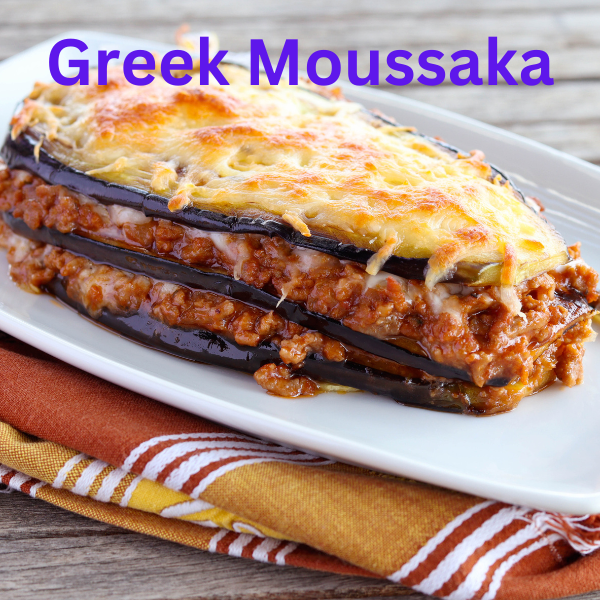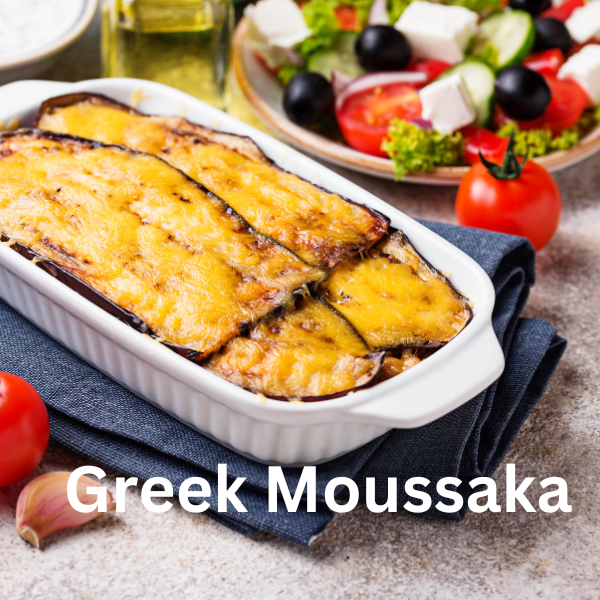
Greek cuisine is famous for its rich flavors and hearty dishes, and few recipes are as beloved as Moussaka, the ultimate comfort food. This layered casserole dish, traditionally made with eggplants, ground meat, and a creamy Béchamel sauce, is a staple of Greek households and a favorite at dinner tables worldwide. But while Moussaka is delicious, its preparation can often feel overwhelming due to the multiple steps involved. Fortunately, with a few clever tips and tricks, you can simplify the process without sacrificing taste. Here’s the ultimate guide to making traditional Greek Moussaka easier and more accessible.
What is Moussaka?
Moussaka is a classic Greek dish with layers of cooked eggplants, a savory meat sauce, and a luscious Béchamel topping. The dish is baked to golden perfection, resulting in a meal that’s as visually stunning as it is flavorful. Variations of Moussaka can also be found in other Mediterranean cuisines, but the Greek version is distinguished by its creamy, cheesy Béchamel sauce.
Traditional Moussaka may seem intimidating because it requires preparing several components separately before assembling them. However, the right strategies can help you streamline the process.

Tips for Simplifying Moussaka Preparation
1. Prepare Ingredients Ahead of Time
One of the reasons Moussaka can feel time-consuming is the need to prepare several elements: the meat sauce, vegetables, and Béchamel. To save time, consider prepping some of these ingredients a day in advance:
- Meat Sauce: Cook the ground meat with onions, garlic, tomatoes, and spices. Let it cool and store it in the refrigerator.
- Vegetables: Slice or dice your eggplants and potatoes ahead of time. You can even roast or air-fry them a day early.
- Béchamel Sauce: While best made fresh, you can prepare the roux (butter and flour mixture) in advance and store it. Add milk and seasonings when you’re ready to assemble.
2. Use Pre-Roasted Vegetables
Instead of frying eggplants and potatoes (which can be messy and unhealthy), roast them in the oven. This not only cuts down on oil usage but also eliminates the need for constant attention at the stovetop. To do this:
- Preheat your oven to 200°C (392°F).
- Place diced or sliced eggplants and potatoes on a baking sheet.
- Drizzle with olive oil, salt, and pepper, then toss to coat evenly.
- Roast for 20-25 minutes until golden and tender.
Roasting adds a rich, caramelized flavor to the vegetables while saving you time.
3. Choose the Right Cheese
Cheese is a crucial component of Moussaka’s Béchamel sauce. While traditional recipes call for Greek cheeses like Kefalotyri or Myzithra, they might not always be available. You can substitute them with Gouda, Parmesan, or even a blend of mozzarella and cheddar for a creamy, slightly tangy topping.
4. Make It Vegetarian-Friendly
If you’d like a vegetarian option, replace the ground meat with lentils, mushrooms, or a mix of both. Lentils provide a hearty texture and absorb spices well, while mushrooms add a savory, umami flavor. Simply cook them with the same seasonings as the traditional meat sauce.
5. Use a Mandoline for Uniform Slicing
A mandoline slicer can save time and ensure evenly cut vegetables, which cook more uniformly. Even slices not only improve the dish’s texture but also give it a more professional appearance.
The Step-by-Step Guide to Making Easy Moussaka
Step 1: Prepare the Meat Sauce
The meat sauce is the heart of Moussaka. To make it:
- Heat olive oil in a pan and sauté diced onions and minced garlic for 2-3 minutes.
- Add 2 bay leaves and a pinch of cinnamon for a warm, aromatic base.
- Add ground meat (beef or lamb) and cook until it turns brown.
- Stir in tomato paste, half a cup of water, salt, and pepper. Lower the heat and let it simmer until the liquid evaporates.
Pro Tip: Add a handful of chopped parsley at the end for freshness and flavor.
Step 2: Prepare the Vegetables
Instead of slicing eggplants and potatoes into rounds, cut them into small squares or cubes. This makes them quicker to roast and easier to layer in the dish.
- Spread the vegetables on a baking sheet with olive oil, salt, and pepper.
- Roast at 200°C (392°F) for 20 minutes.
Step 3: Make the Béchamel Sauce
A creamy Béchamel sauce is key to Moussaka’s luxurious texture. Here’s how to prepare it:
- Melt butter in a saucepan over medium heat.
- Whisk in an equal amount of flour and cook for 1-2 minutes.
- Gradually add milk in three portions, whisking constantly to avoid lumps.
- Once the mixture thickens, remove it from heat and stir in two egg yolks and grated cheese.
- Season with salt and pepper.
Pro Tip: For a lighter version, use olive oil instead of butter and replace whole milk with low-fat milk.
Step 4: Assemble the Moussaka
- Spread a layer of roasted eggplants and potatoes on the bottom of a baking dish.
- Add a layer of meat sauce, spreading it evenly.
- Repeat the layers until all ingredients are used, finishing with a thick layer of Béchamel sauce.
- Sprinkle grated cheese over the top.
Step 5: Bake to Perfection
- Preheat your oven to 190°C (374°F).
- Bake the Moussaka for 1 hour until the top is golden and bubbly.
- Let it rest for 10-15 minutes before serving to allow the layers to set.
Tips for Serving and Storing Moussaka
- Serving Suggestions: Moussaka pairs beautifully with a fresh Greek salad, crusty bread, or tzatziki sauce for a complete Mediterranean meal.
- Storage Tips: Moussaka tastes even better the next day! Store leftovers in an airtight container in the refrigerator for up to 3 days. Reheat in the oven for best results.
- Freezing: Assemble the dish but do not bake it. Wrap it tightly and freeze for up to 3 months. When ready to serve, thaw and bake as usual.

Why Moussaka is Worth the Effort
Though simplifying the recipe reduces preparation time, Moussaka is still a dish that requires care and attention. Each component—the roasted vegetables, the aromatic meat sauce, and the velvety Béchamel—adds depth and flavor, making the final dish greater than the sum of its parts.
Moussaka is a celebration of Greek culinary traditions, and every bite tells a story of the Mediterranean’s rich history and love for good food. By using these tips and tricks, you can enjoy this iconic dish without feeling overwhelmed in the kitchen.
Final Thoughts
Making traditional Greek Moussaka doesn’t have to be complicated. With a bit of planning and some handy shortcuts, you can create a dish that looks and tastes like it came straight from a Greek taverna. Whether you’re hosting a dinner party or simply treating your family, this simplified version of Moussaka will leave everyone impressed.
The Secret to Preparing Traditional Greek Moussaka Easily
Description
Discover an easier way to prepare traditional Greek Moussaka without compromising on flavor. This hearty, layered casserole combines roasted eggplants, a savory meat sauce, and creamy Béchamel for a comforting Mediterranean meal. Perfect for gatherings or weekday dinners!




